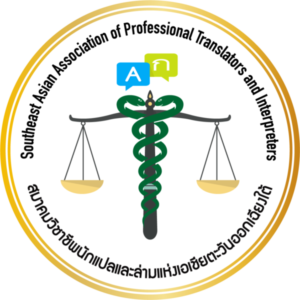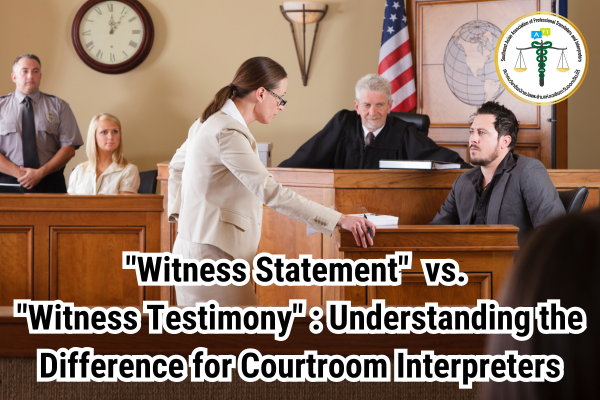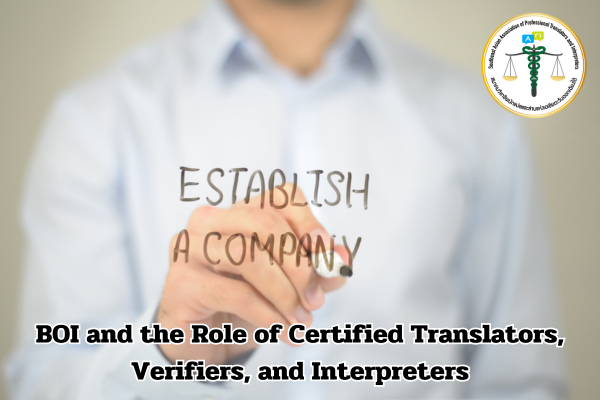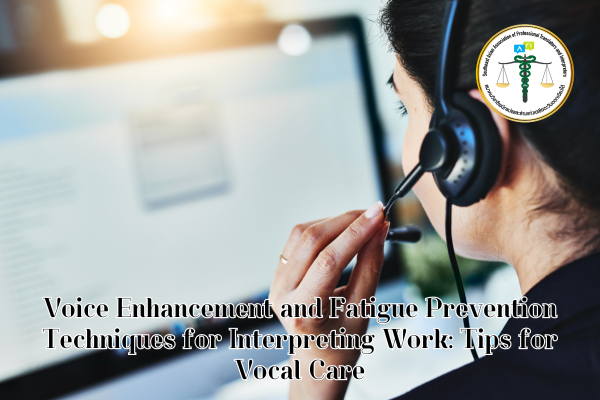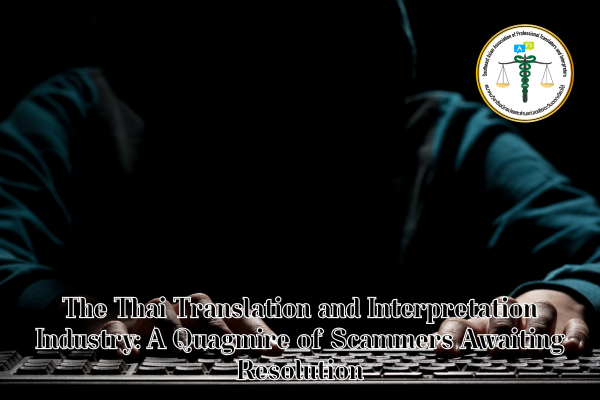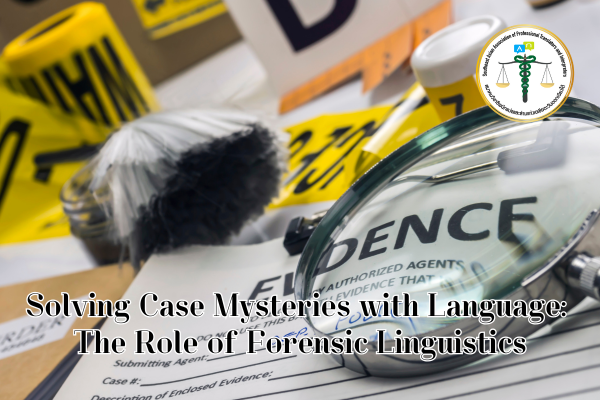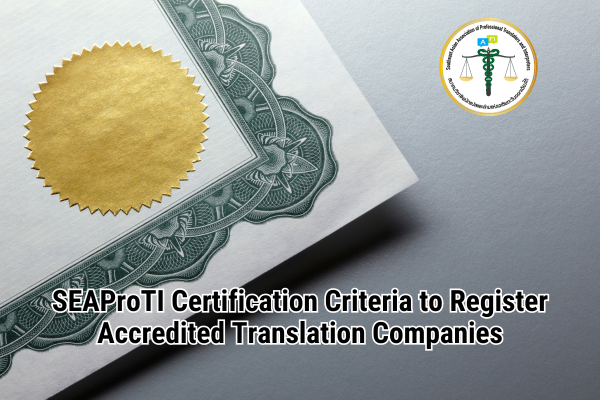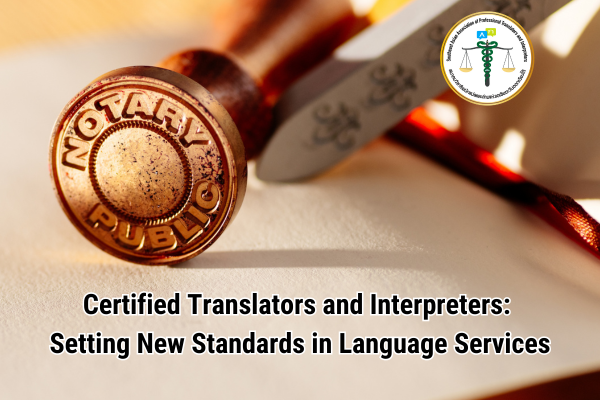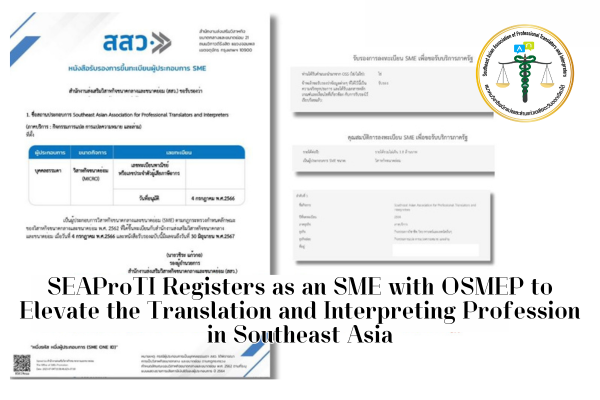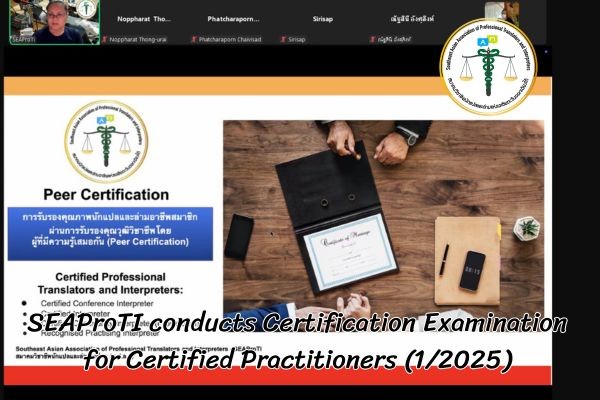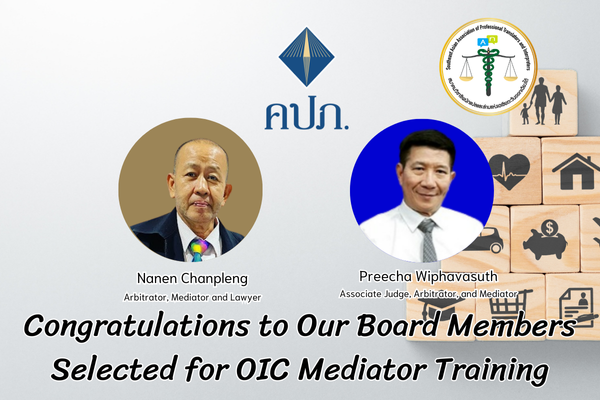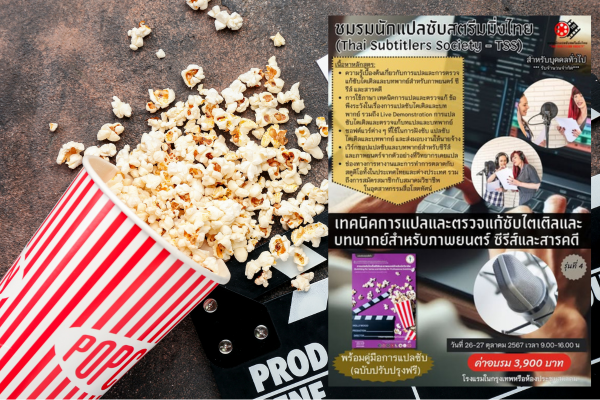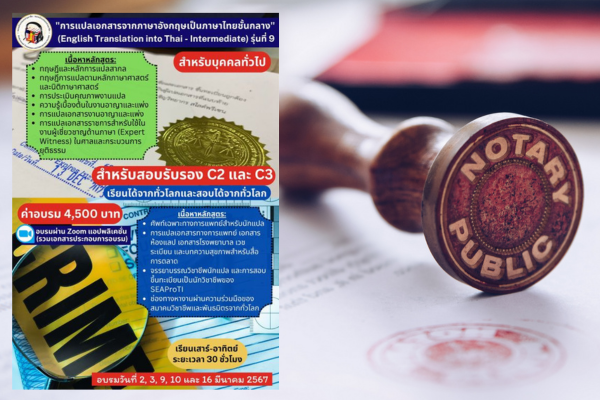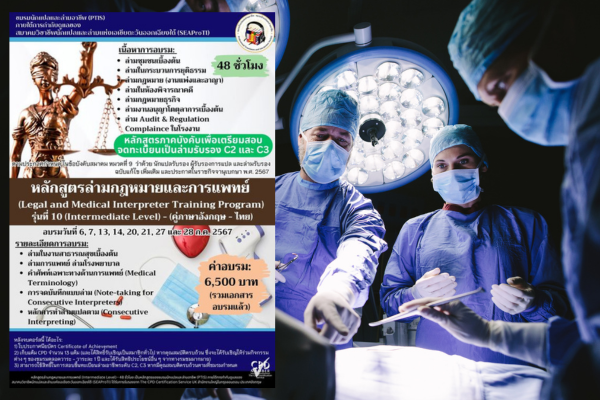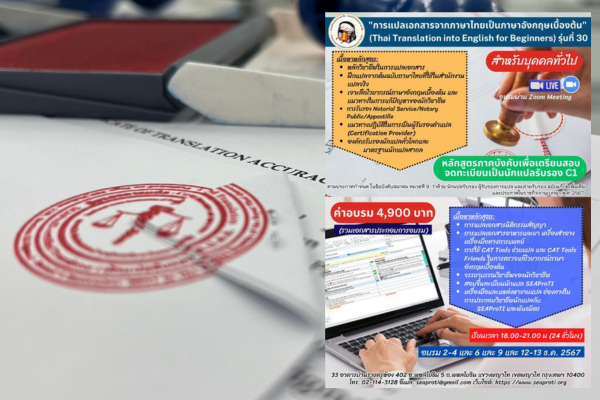“Witness Statement” vs. “Witness Testimony” : Understanding the Difference for Courtroom Interpreters
In the justice system, legal terminology plays a crucial role in fostering a shared understanding among judges, lawyers, witnesses, and interpreters. This is especially important in multilingual contexts, where the accurate and appropriate use of terminology affects the accuracy of proceedings and fairness for all parties. However, certain terms, such as “Witness Statement” and “Witness Testimony,” often cause confusion due to their subtle differences in meaning and context.
This confusion is not limited to the general public but can extend to interpreters who may lack a linguistic or legal background. Misinterpretation of these terms can lead to inaccuracies, undermining the credibility of the judicial process. This article seeks to clarify the differences between “Witness Statement” and “Witness Testimony” and offers guidance for interpreters working in courtrooms to maintain professional standards and uphold ethical practices.
Key Differences Between “Witness Statement” and “Witness Testimony”
Witness Statement
- Definition: A written document recording a witness’s account of events, prepared in advance of court proceedings. It is usually collected during an investigation by officers or lawyers to gather essential information.
- Source: Prepared by police officers, lawyers, or designated personnel. It serves as evidence in a case but does not constitute testimony given before a judge.
Witness Testimony
- Definition: The oral account given by a witness in court before a judge and others involved in the trial process.
- Source: Provided verbally (oral testimony) by the witness in court. It may be recorded by judges or court officials and is subject to cross-examination by opposing counsel to confirm or challenge facts.
Common Issues and Observations in Interpretation
Interpreters who lack formal linguistic or legal training often interpret “Witness Statement” and “Witness Testimony” as having similar meanings. However, the critical distinctions are:
- A Witness Statement is prepared before trial and serves as foundational information for the case.
- A Witness Testimony is the actual verbal account given in court, carrying legal weight in the trial process.
Challenges in Thai Legal Terminology
In Thai, legal terminology often lacks clarity, leading to potential misunderstandings. For example:
- The term คำให้การ (kham hai kan) can refer to both “Statement” and “Testimony.”
- Contextual distinctions are unclear, causing confusion for interpreters, foreign nationals, and even legal personnel.
Ad Hoc Use of Terminology
In the absence of standardized terms from judicial agencies such as courts, prosecutors, or lawyers, terminology is often used on an ad hoc basis:
- Lawyers may use their preferred terms.
- Interpreters must adapt their terminology to each case, often without clear guidelines.
Best Practices for Courtroom Interpreters
Preparation and Research
- Study relevant legal terminology thoroughly.
- Verify the meanings of terms using legal dictionaries or other recognized standards.
Clear Communication with Legal Counsel
- Clarify the intended terminology with lawyers.
- Ask questions and confirm meanings before starting the assignment.
Adherence to Ethical Standards
- Use neutral and contextually accurate terms.
- Avoid translating terms in a way that may lead to misunderstanding or misrepresentation.
Promoting Long-Term Standardization
- Advocate for standardized legal terminology within the justice system.
- Support specialized training programs for court interpreters.
Cautionary Notes
- Avoid using transliterated terms that may cause confusion.
- Understand the case’s context and the purpose of each term used.
- Follow ethical guidelines and maintain confidentiality in judicial proceedings.
Conclusion
The interpretation of “Witness Statement” and “Witness Testimony” requires careful consideration of legal context and procedural nuances. Establishing a shared understanding among interpreters and other stakeholders can minimize confusion and enhance accuracy in judicial proceedings. Furthermore, promoting the standardization of legal terminology within the justice system is essential to enabling interpreters to work professionally and ethically.
For interpreters, understanding the precise meaning and context of legal terminology is not just a duty—it is part of ensuring justice in the trial process. Developing knowledge, skills, and ethical professionalism is critical for interpreters to fulfill their role as reliable and credible linguistic bridges in the courtroom.
SEAProTI’s certified translators, translation certification providers, and certified interpreters:
The Southeast Asian Association of Professional Translators and Interpreters (SEAProTI) has officially announced the criteria and qualifications for individuals to register as “Certified Translators,” “Translation Certification Providers,” and “Certified Interpreters” under the association’s regulations. These guidelines are detailed in Sections 9 and 10 of the Royal Thai Government Gazette, issued by the Secretariat of the Cabinet under the Office of the Prime Minister of the Kingdom of Thailand, dated July 25, 2024, Volume 141, Part 66 Ng, Page 100.
To read the full publication, visit: the Royal Thai Government Gazette
“Witness Statement” กับ “Testimony” ต่างกันอย่างไร
ในกระบวนการยุติธรรม คำศัพท์ทางกฎหมายมีบทบาทสำคัญอย่างยิ่งในการสร้างความเข้าใจร่วมกันระหว่างบุคคลในระบบ ไม่ว่าจะเป็นผู้พิพากษา ทนายความ พยาน หรือล่าม โดยเฉพาะในกรณีที่เกี่ยวข้องกับการสื่อสารข้ามภาษา การใช้คำศัพท์ที่ถูกต้องและเหมาะสมมีผลต่อความถูกต้องของการดำเนินคดีและความเป็นธรรมต่อทุกฝ่าย อย่างไรก็ตาม คำศัพท์บางคำ เช่น “Witness Statement” และ “Witness Testimony” มักสร้างความสับสนในหมู่ผู้ใช้ภาษา เนื่องจากความแตกต่างในความหมายและบริบทที่ละเอียดอ่อน
ความสับสนนี้ไม่ได้เกิดขึ้นเฉพาะในกลุ่มบุคคลทั่วไป แต่ยังรวมถึงล่ามบางคนที่อาจขาดพื้นฐานด้านภาษาศาสตร์หรือประสบการณ์ในกระบวนการยุติธรรมโดยตรง ความไม่ชัดเจนดังกล่าวอาจนำไปสู่การตีความที่คลาดเคลื่อน ส่งผลกระทบต่อความน่าเชื่อถือของการพิจารณาคดี บทความนี้จึงมุ่งเน้นอธิบายความแตกต่างระหว่าง “Witness Statement” และ “Witness Testimony” พร้อมทั้งเสนอแนวทางสำหรับล่ามที่ต้องทำงานในห้องพิจารณาคดีเพื่อรักษามาตรฐานวิชาชีพและจรรยาบรรณในการปฏิบัติงาน
ความแตกต่างระหว่าง “Witness Statement” และ “Witness Testimony”
-
Witness Statement (บันทึกถ้อยคำของพยาน)
- ความหมาย: เป็นเอกสารที่บันทึกคำให้การของพยานล่วงหน้าก่อนการเบิกความในศาล ซึ่งมักเกิดขึ้นในระหว่างการสอบสวนของเจ้าหน้าที่หรือทนายความเพื่อรวบรวมข้อมูลสำคัญ
- ที่มา: จัดทำโดยเจ้าหน้าที่ตำรวจ ทนาย หรือบุคคลที่ได้รับมอบหมาย บันทึกนี้ใช้เป็นหลักฐานประกอบในคดี และไม่ใช่เอกสารที่มีการจดบันทึกจากการเบิกความต่อหน้าผู้พิพากษา
-
Witness Testimony (คำเบิกความของพยาน)
- ความหมาย: เป็นคำให้การที่พยานกล่าวในศาลต่อหน้าผู้พิพากษาและผู้ที่เกี่ยวข้องในกระบวนการพิจารณาคดี
- ที่มา: พยานให้การด้วยวาจา (oral testimony) ซึ่งอาจถูกบันทึกไว้โดยผู้พิพากษาหรือเจ้าหน้าที่ศาล และจากการสืบพยาน (Witness Examination) โดยคู่ความอีกฝ่ายเพื่อยืนยันหรือโต้แย้งข้อเท็จจริง
ปัญหาที่เกิดขึ้นและข้อสังเกตในการทำงานของล่าม
บ่อยครั้งที่ล่ามที่ไม่ได้จบการศึกษาเฉพาะทางด้านภาษา และขาดความเข้าใจด้านภาษาศาสตร์ อาจตีความว่า “Witness Statement” และ “Witness Testimony” มีความหมายคล้ายกัน แต่ความแตกต่างสำคัญคือ:
- Witness Statement ถูกจัดทำก่อนการเบิกความ และใช้เป็นพื้นฐานข้อมูลในการดำเนินคดี หรือที่เราเรียกกันว่า “บันทึกถ้อยคำแทนการซักถามพยาน”
- Witness Testimony เป็น “คำเบิกความ” จากคำพูดที่พยานให้ไว้ในศาลหรือต่อหน้าศาล ซึ่งมีผลทางกฎหมายในกระบวนการพิจารณาคดี หรือที่เรารู้จักกันคือ “คำเบิกความ”
ปัญหาความไม่สอดคล้องในภาษาไทย
ในภาษาไทย มักมีการใช้คำศัพท์ที่ไม่ชัดเจน หรือใช้คำเดียวกันแทนสองแนวคิดนี้ เช่น
- คำให้การ อาจหมายถึงทั้ง “Statement” และ “Testimony”
- ความแตกต่างในบริบทไม่ชัดเจน จนสร้างความสับสนให้กับล่าม ชาวต่างชาติ และแม้กระทั่งบุคลากรในกระบวนการยุติธรรม
ลักษณะการใช้คำศัพท์ชั่วคราว
ในกรณีที่ไม่มีมาตรฐานคำศัพท์จากหน่วยงานในกระบวนการยุติธรรม เช่น ศาล อัยการ หรือทนายความ มักเกิดการใช้คำศัพท์แบบชั่วคราวเพื่อการสื่อสารในบริบทเฉพาะ เช่น
- ทนายแต่ละคนอาจกำหนดคำศัพท์ของตัวเอง
- ล่ามต้องปรับคำศัพท์ตามแต่ละคดี โดยขาดแนวทางที่ชัดเจน
แนวทางประกอบวิชาชีพของล่ามในห้องพิจารณาคดี
-
การศึกษาและเตรียมตัวล่วงหน้า
- ศึกษาคำศัพท์ทางกฎหมายที่เกี่ยวข้องอย่างละเอียด
- ตรวจสอบความหมายของคำในพจนานุกรมกฎหมายหรือมาตรฐานอื่น ๆ ที่ได้รับการยอมรับ
-
การสื่อสารอย่างชัดเจนกับทนายความ
- ทำความเข้าใจกับคำศัพท์ที่ทนายความตั้งใจใช้
- ตั้งคำถามและยืนยันความหมายที่ชัดเจนก่อนเริ่มงาน
-
การยึดมั่นในจรรยาบรรณวิชาชีพ
- ใช้คำที่เป็นกลางและตรงกับบริบทที่สุด
- หลีกเลี่ยงการแปลคำที่อาจสร้างความเข้าใจผิดหรือบิดเบือนข้อเท็จจริง
-
การสร้างมาตรฐานในระยะยาว
- ส่งเสริมให้มีการกำหนดคำศัพท์ที่เป็นมาตรฐานร่วมกันในกระบวนการยุติธรรม
- ผลักดันให้มีการฝึกอบรมล่ามในห้องพิจารณาคดีโดยเฉพาะ
ข้อพึงระวัง
- หลีกเลี่ยงการใช้คำแบบทับศัพท์ที่อาจสร้างความเข้าใจผิด
- ต้องเข้าใจบริบทของคดีและวัตถุประสงค์ของการใช้คำแต่ละคำ
- ปฏิบัติตามแนวทางจรรยาบรรณและรักษาความลับในกระบวนการพิจารณาคดี
สรุป
การแปล “Witness Statement” และ “Witness Testimony” ต้องพิจารณาถึงความแตกต่างเชิงบริบทและกระบวนการทางกฎหมายอย่างละเอียด การสร้างมาตรฐานและความเข้าใจร่วมกันในกลุ่มล่ามและผู้ที่เกี่ยวข้องจะช่วยลดความสับสนและเพิ่มความถูกต้องในกระบวนการยุติธรรม
ความแตกต่างระหว่าง “Witness Statement” และ “Witness Testimony” เป็นตัวอย่างของการใช้คำศัพท์ทางกฎหมายที่ต้องการความแม่นยำและความเข้าใจในบริบท การตีความผิดพลาดไม่เพียงสร้างความสับสน แต่ยังส่งผลต่อความน่าเชื่อถือของการพิจารณาคดี การเตรียมตัวอย่างเหมาะสมและการสื่อสารอย่างชัดเจนระหว่างล่ามและบุคคลในกระบวนการยุติธรรมเป็นกุญแจสำคัญในการป้องกันปัญหาดังกล่าว นอกจากนี้ การสร้างมาตรฐานการใช้คำศัพท์ในระบบยุติธรรมยังเป็นสิ่งที่ควรสนับสนุน เพื่อให้ล่ามสามารถปฏิบัติงานได้อย่างมืออาชีพ พร้อมทั้งรักษาจรรยาบรรณในการทำงาน
ในฐานะล่าม การเข้าใจความหมายและบริบทของคำศัพท์อย่างถูกต้องไม่ใช่แค่หน้าที่ แต่ยังเป็นส่วนหนึ่งของการรักษาความยุติธรรมในกระบวนการพิจารณาคดี การพัฒนาความรู้ ทักษะ และจรรยาบรรณวิชาชีพจึงเป็นสิ่งสำคัญที่ล่ามทุกคนควรให้ความสำคัญ เพื่อทำหน้าที่เป็นสะพานเชื่อมภาษาที่มีความมั่นคงและน่าเชื่อถือที่สุด
เกี่ยวกับนักแปลรับรอง ผู้รับรองการแปล และล่ามรับรองของสมาคมวิชาชีพนักแปลและล่ามแห่งเอเชียตะวันออกเฉียงใต้
สมาคมวิชาชีพนักแปลและล่ามแห่งเอเชียตะวันออกเฉียงใต้ (SEAProTI) ได้ประกาศหลักเกณฑ์และคุณสมบัติผู้ที่ขึ้นทะเบียนเป็น “นักแปลรับรอง (Certified Translators) และผู้รับรองการแปล (Translation Certification Providers) และล่ามรับรอง (Certified Interpreters)” ของสมาคม หมวดที่ 9 และหมวดที่ 10 ในราชกิจจานุเบกษา ของสำนักเลขาธิการคณะรัฐมนตรี ในสำนักนายกรัฐมนตรี แห่งราชอาณาจักรไทย ลงวันที่ 25 ก.ค. 2567 เล่มที่ 141 ตอนที่ 66 ง หน้า 100 อ่านฉบับเต็มได้ที่: นักแปลรับรอง ผู้รับรองการแปล และล่ามรับรอง

